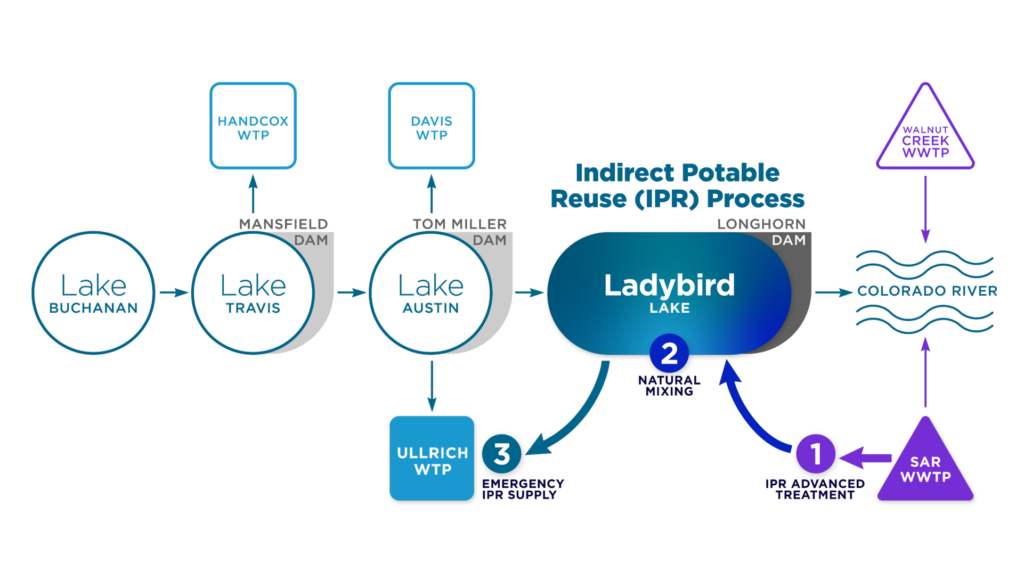For future water conservation, reuse may be key
Monday, August 5, 2024 by
Kali Bramble Though July’s rain may have eased some fears over the continuing drought, Austin Water is still playing the long game, with plans to prepare for a drier future.
Water Resources Supervisor Marisa Flores Gonzalez joined the city’s Water and Wastewater Commission last month to discuss a new indirect potable reuse project, designed to stretch Austin’s water supply during severe shortages. With rough schematics in place, the utility hopes to have the infrastructure fully operational by 2028.

Credit: Austin Water
The project would recapture effluent wastewater for treatment and return it to Lady Bird Lake, where it would undergo natural mixing and eventual reintegration to the potable water supply. Use of the system would be triggered only when the combined storage of lakes Travis and Buchanan hit dire levels of 400,000 acre-feet, 200,000 below Stage 4 Drought levels. (For context, the latest reports from the Lower Colorado River Authority show a combined storage of 1,106,412 acre-feet.)
Austin Water is not the first utility in Texas to embrace the strategy – El Paso’s Fred Hervey Water Reclamation Plant has been treating wastewater to return to its Hueco Bolson Aquifer system since 1984. Since then, cities like Abilene and Wichita Falls alongside a handful of North Texas water districts have followed suit.
The project is part of the city’s Water Forward Plan, a collection of conservation strategies rolled out in 2018 intended to bolster the utility’s drought resilience. The plan outlines projects including an Aquifer Storage and Recovery pilot program, brackish groundwater desalination, community-scale stormwater harvesting and an expansion of the city’s centralized reclaimed purple pipe system all as components of its long-term vision plan.
Over the next few years, Austin Water will be tasked with building out the necessary infrastructure, including sidestream treatment facilities and a transmission line that will pretreat reclaimed water from Southeast Austin before sending it off to Lady Bird Lake for mixing. The team will also design a new intake and pump facility at the lake itself.
Austin Water hopes that by 2040, the project can yield an additional 11,000 acre-feet of potable water per year. In the longer term, the utility says the system could provide up to 20,000 acre-feet of savings per year.
Readers can learn more about the city’s Water Forward plan here.
Photo made available through a Creative Commons license. This story has been changed to correct the drought-trigger thresholds.
The Austin Monitor’s work is made possible by donations from the community. Though our reporting covers donors from time to time, we are careful to keep business and editorial efforts separate while maintaining transparency. A complete list of donors is available here, and our code of ethics is explained here.
You're a community leader
And we’re honored you look to us for serious, in-depth news. You know a strong community needs local and dedicated watchdog reporting. We’re here for you and that won’t change. Now will you take the powerful next step and support our nonprofit news organization?




